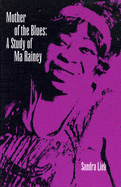If you’ve heard anything about Netflix’s Ma Rainey’s Black Bottom, you’ve likely heard about the stupendous performances fanning the flames of Oscar whispers, or about the unique legacy of this film as the late Chadwick Boseman’s final on-screen role. What you may not know is the true story behind the project, which concerns a once-in-a-generation musician ahead of her time—a woman determined to control her art and her life on her own terms.
Based on August Wilson’s Tony-nominated 1982 play by the same title, Ma Rainey’s Black Bottom draws inspiration from the life of Getrude “Ma” Rainey, the pioneering blues singer widely known as “The Mother of the Blues.” Rainey was among the first blues singers to record music; she also broke new ground for generations of blues singers to come by fusing vaudeville with southern blues. Wilson’s play depicts a fictionalized afternoon in Rainey’s life, set on a sweltering summer day in Chicago circa 1927, with Rainey set to record a song titled “Ma Rainey’s Black Bottom.” Waiting at the run-down record studio for a tardy Rainey and her entourage are her Black band members, her white manager, and the white owner of the record label. When Rainey finally arrives, a heated conflict erupts between everyone present—one that wrestles with the complexities of racism and artistic exploitation.
This content is imported from YouTube. You may be able to find the same content in another format, or you may be able to find more information, at their web site.
Born Gertrude Pridgett in Columbus, Georgia in 1886, the second of five children, Rainey got her start singing professionally as a teenager, performing for the first time in Columbus in 1900 before she began traveling the rural South’s tent-show circuit with vaudeville groups. In 1902, she was exposed for the first time to blues music, and found herself so enamored of it that she began working blues into her performances. In 1904, she married comedian, dancer, and singer Will Rainey; together they toured the South with a variety of minstrel groups, billing themselves as Ma and Pa Rainey. In 1906, they joined the Rabbit Foot Minstrels, then the nation’s most esteemed traveling minstrel troupe. In 1914, they struck out on their own, touring under the name Rainey and Rainey, Assassinators of the Blues.
In 1916, Rainey separated from her husband and began touring with her own show, Madam Gertrude Ma Rainey and Her Georgia Smart Set, which included a chorus line of male and female dancers. As was often the case with tent show acts, she wintered in New Orleans, where she befriended jazz musicians like Louis Armstrong, Sidney Bechet, and Joe “King” Oliver. She also became acquainted with a young Bessie Smith, who would later become known as “the Empress of Blues.” Rainey became a mentor to Smith, as they bonded over their bisexuality and their shared passion for lyrics that pushed the envelope of propriety. In 1925, when Rainey was jailed in Chicago following her arrest for throwing an all-female party-turned-orgy, it was Smith who bailed her out of jail.
To be a openly bisexual Black woman, even during the flourishing of LGBTQ life that occurred during the 1920s, was to live dangerously. Yet Rainey didn’t let the conservative social mores of the time restrict her; in fact, in 1928, she recorded a song called “Prove It On Me Blues,” which included the lyric, “Went out last night with a crowd of my friends, must have been women, ‘cause I don’t like no men.” Though some of her songs describe romantic entanglements with men, others refer to lesbianism or bisexuality.
This content is imported from YouTube. You may be able to find the same content in another format, or you may be able to find more information, at their web site.
From the 1920s through the 1940s, the emerging big business of music saw increased demand for what was then called “race records” (they’d later be renamed “rhythm and blues”)—albums by and for Black audiences. Although the musicians on these albums innovated profoundly in the genres of jazz, gospel, and blues, they were often under-recognized and underpaid, receiving little credit or fame for their musicianship. They also had little to no legal ground to stand on, as record labels inked very few royalty agreements with Black artists. Smith, for example, made millions of dollars for Columbia Records, but could not read and received no royalties. Ma Rainey’s Black Bottom depicts this racist structure within the music industry, with the fictionalized Rainey railing against the financial exploitation and creative control of her white managers.
J. Mayo Williams, the most successful “race records” producer of his time, discovered Rainey and signed her to Paramount Records, located in Chicago, in 1923. Though she was not the first Black woman to record music (that was Mamie Smith in 1920), she recorded almost 100 songs with Paramount over the following five years, making her a household name among Black Americans. During that time, she recorded with Armstrong and Jelly Roll Martin, with whom she also performed on the Chicago house party circuit. She continued to tour the country and perform everywhere from large theaters to rural tents, refusing to turn her back on the audience that catapulted her to stardom. All the while, she remained in control of her own finances, refusing to cede management of her earnings to anyone else. Just five years after she began recording, Paramount terminated her contract in 1928, concluding that her trademark “moaning” style of blues had gone out of fashion. When Paramount went bankrupt in the 1930s, owing to the rise of radio and the severe wallop of the Great Depression, Rainey’s records fell out of print, and remained difficult to access until they were remastered and reissued in the late 1960s.
After her relationship with Paramount ended, Rainey returned to making a living on the declining tent show circuit, but the living was rough: she cooked her meals on a camp stove and cobbled her costumes together from scraps of old dresses. She largely faded into obscurity until 1935, after the death of her mother and sister, when she returned to her hometown in Georgia and effectively retired from show business. With what was left of her savings from the Paramount days, she bought and ran two theaters (the Lyric and the Airdrome) until her death of a heart attack in 1939 at the age of 53. Her death certificate lists her occupation as “housekeeper.”
In the decades since her death, Rainey has loomed large as a titanic figure in the history of blues. In the history of Black America, she holds a special place as an early pioneer of sexual liberation and personal empowerment. The poet Sterling A. Brown said of her, “Ma Rainey was a tremendous figure. She had [the audience] in the palm of her hand. Bessie [Smith] was the greater blues singer, but Ma really knew these people. She was a person of the folk.” In 1983, she was inducted into the Blues Hall of Fame, and in 1990, she was inducted into the Rock ‘n Roll Hall of Fame.
“Ma Rainey may not have been the first woman to sing the blues, but she might as well have,” wrote Chris Albertson in the essay commemorating Rainey’s induction to the Rock ‘n Roll Hall of Fame. “Her sturdy, tough vocals wiped away any memory of other blues singers. Whatever you heard before, it was not the blues—because no one else sang the blues like Ma Rainey.”
This content is created and maintained by a third party, and imported onto this page to help users provide their email addresses. You may be able to find more information about this and similar content at piano.io








